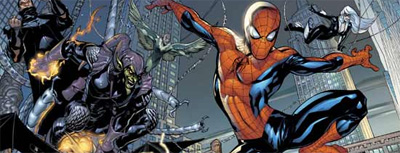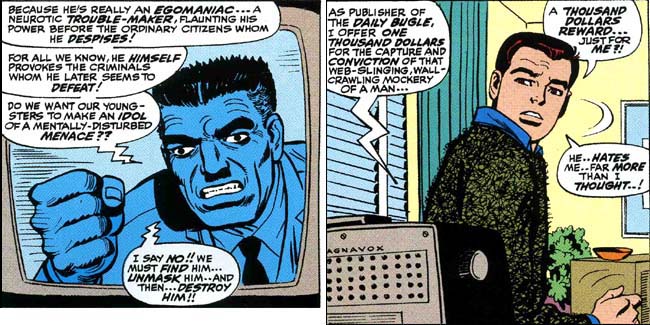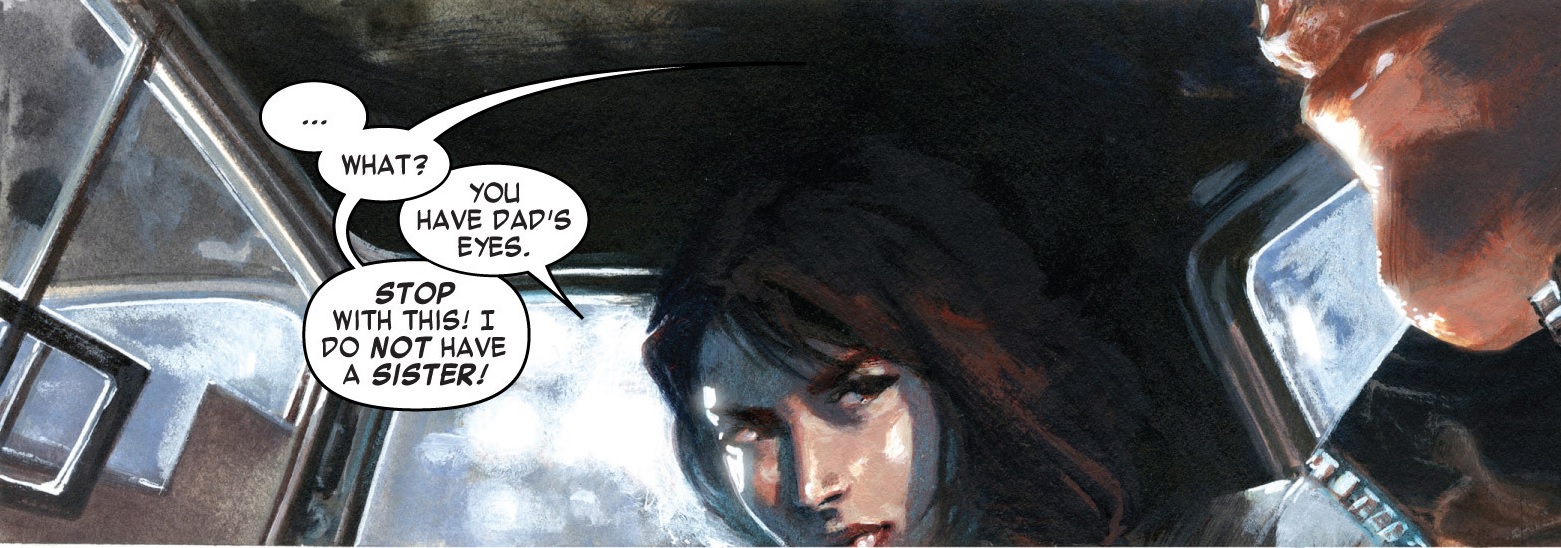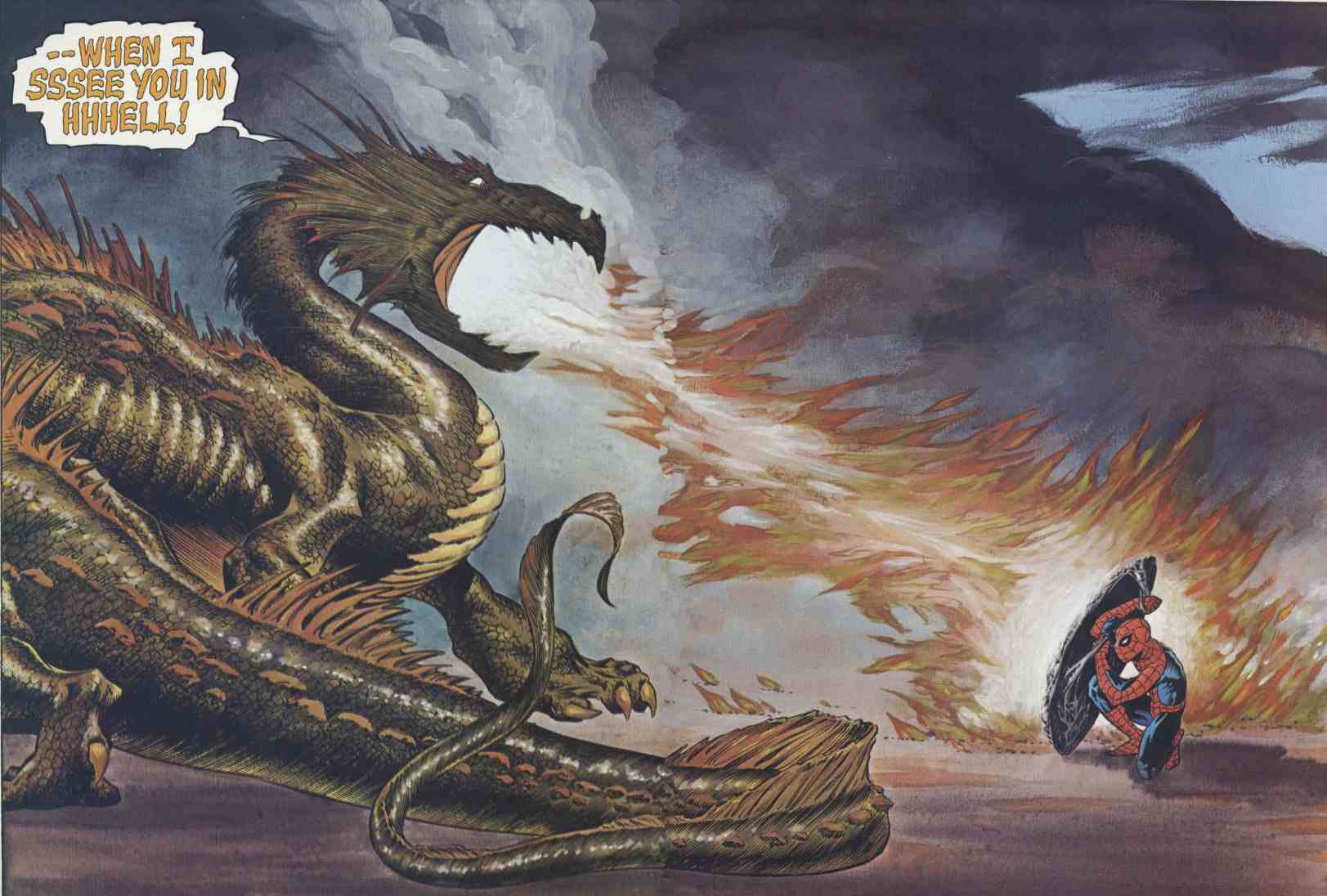
The new iteration of Peter Parker the Spectacular Spider-Man just came to an end. This shouldn’t be too surprising, since this is a book that has struggled in sales, despite solid reviews, an impressive array of artists (Adam Kubert, Joe Quinones, Chris Bachalo) and the best character in comics. It’ll be replaced by a new edition of Friendly Neighborhood Spider-Man by Tom Taylor and Juan Cabal.
This gets to the question of whether Marvel should even have Spider-Man satellites. They tried getting rid of these during the Brand New Day era, and we’ve had increased output of Amazing Spider-Man since then, but there have also consistently been additional monthly books, from the anthology Web of Spider-Man, to team-up series Avenging Spider-Man, and Spider-Man/ Deadpool.
Marvel’s stuck with four imperfect options. They could cut the regular Marvel Universe Spider-Man down to one book a month (Boo!) They could have one writer (or a writing duo) working on several issues a month of Amazing Spider-Man and dump the rest. They could have a rotating group of writers, but this bothers people who prefer reading a series with a consistent voice. Or they could make sure that there’s more Spider-Man books in addition to Amazing Spider-Man.

The reason Marvel keeps going with these satellite titles is that there are advantages to having several Spider-Man books. These books do tend to make a profit (the typical Spider-Man satellite will have a better return on investment than spending the same time and resources on an obscure team or solo book like Moon Knight, War Machine or the Champions.) Some readers don’t have the budget to buy multiple titles so this is a way they could just follow one. If someone doesn’t like the creative team of Amazing Spider-Man, they get another option. Multiple monthlies is usually one way to get the appearance of one voice on the characters on a particular title, even if it isn’t the reality, since the same lead will still pop up in several different titles set at the same time.
A major drawback is that the other titles aren’t perceived as being as relevant as Amazing Spider-Man. One can argue that Superman and Batman have survived for more than half a century despite the title heroes starring in several books. However, since Batman premiered in Detective Comics and Superman premiered in Action Comics, and both titles have a rich history of significant events, neither title (assuming the creative teams are roughly equal) is seen as notably less significant than Batman or Superman. This could be why Detective Comics often outsells better-received Batman satellites with more impressive creative teams, and why DC chose to increase output of these books during their Rebirth initiative.
The Batman comics have a few things that work for multiple monthlies. Story engines in Gotham City and Wayne Industries allow for multiple ongoing plot threads in different monthlies, as various criminal plots (which can usually be restricted to one title each) get Bruce Wayne’s attention. And there’s a consistent cast for Batman to interact with in every story (Alfred and Commissioner Gordon) which allows for passing references to events in other titles. Meanwhile, Superman’s power-set and job as a reporter take him all over the world and allow for standalone adventures. He has supporting cast members in two geographic locations: Smallville and Metropolis.

The emphasis on Peter Parker’s personal life makes it difficult to follow his adventures in multiple books. Marvel Team-Up was a bit of an exception, since it doesn’t require much of an emphasis on Peter’s private life, given how pages are shared with the guest-star. It introduces the Marvel Universe to readers, exposing them to other corners. It is a bit limited as a focus since it requires stories that bring in other superheroes. This also limits the ability of writers on other books to do team-ups, and makes team-ups less special if it happens to Spidey once a month.

When characters star in several books, events that have repercussions on each title might occur in crossovers between these series. This has happened often with Batman and Superman, as well as with Spider-Man, especially during the Clone Saga. There was a large stretch on the title was essentially a de facto weekly book, with the same story continuing throughout comics written by different people. Amazing Spider-Man #394-399 were each parts of a larger crossover. Amazing Spider-Man #400 was a mostly standalone story, although there was a major cliffhanger resolved in the pages of another comic book, as Peter Parker was arrested for murder. The next twelve issues (not including the two months the book was replaced with The Amazing Scarlet Spider) were parts of larger crossovers. Amazing Spider-Man #413 and #414 were standalone issues. #415 and #416 were a tie-in to the Onslaught event, with a narrative which crossed several Spider-Man titles. #417 was a standalone. #418 was part of the Revelations crossover that brought the Clone Saga to a close. Crossovers increase sales, but it does raise the question of why we need satellite books rather than just having a weekly Amazing Spider-Man.
The big question for these titles is why the books exist. At a writing workshop, one editor suggested comics sell for three reasons: the characters, the creative team, and the hook. He noted that too often, these books don’t have any hook beyond “Do you like Spider-Man, and Amazing Spider-Man isn’t enough for you? Try Spectacular Spider-Man. Do you like Spider-Man, and do you think Amazing Spider-Man and Spectacular Spider-Man aren’t enough? Try Web of Spider-Man.”

There have been times when each of the books has had had their own identity. Former editor James Owsley (who now goes by Christopher Priest and writes Deathstroke for DC) made this a priority when he took over the line.
One of the first things I did was evaluate the three Spider titles. I told (Editor-in-chief James) Shooter, if we have three monthlies, they each need to have their own deal; their own toys in the box and their own reasons for existing. And they all need to be good. The DeFalco/Frenz run on AMAZING was the crown jewel, a book I thoroughly enjoyed. Frenz was passionate about Spider-Man, verging on fanatical, and nobody knew Spider-Man better than former Spider-editor DeFalco.
Peter David and Rich Buckler were handed Peter Parker the Spectacular Spider-Man, focusing on stories with a “serious, ‘grown-up’ tone and more complex themes that happened primarily at night and wherein Spider-Man wore, primarily, his BLACK uniform.” David Michelinie was paired with artists Marc Silvestri and Kyle Baker for a “moody, off-beat WEB (which took place mainly out of town and mainly concerned Peter’s assignments for NOW Magazine.)”

Without a doubt. I know when I was hired by Bill to come to Marvel that he wanted me to take risks, he wanted his editors to take risks, and use their Rolodexes. Joe [J. Michael] Straczynski happened to be writing a book called Rising Stars at Image [Comics], which was my favorite superhero comic book at the time. He was someone I was very attracted to, but I didn’t know if he had a sense of humor. Rising Stars was many things, but it wasn’t funny. So I just gambled, but I thought Joe Straczynski would be a really good fit for Spider-Man, and when I was offered to take over the Spider-Man line I decided to keep Paul Jenkins on at Peter Parker: Spider-Man because he was telling young adult-friendly Spider-Man stories. It didn’t wander into quite the dark terrain that I knew Joe would go, the more mythological terrain, and then I started that anthology book Tangled Web, to turn loose my Vertigo anthology collaborators and new guys on Spider-Man stories.

He explained that he wanted the books to have different audiences.
With Spider-Man, the challenges were finding ways to push the boundaries without alienating the core fan base, or finding a way through the books to make sure that there was a read for everyone. I always hoped that Amazing Spider-Man would draw one audience, Peter Parker would draw another, and Tangled Web would be for the most adventurous readers of all, people who may not give a shit about Spider-Man, but might be attracted to reading a story by the creator, whether it was Paul Pope or Eduardo Risso or Garth Ennis, people you wouldn’t associate with Spider-Man, coming in and doing a story that took place in this world. Spider-Man is more a shadow on the wall than an actual character; he’s rarely if ever the lead guy in his own book. Turning guys like Paul Pope and Darwyn Cooke loose on Spider-Man was a real pleasure.
With this in mind, the next entry will cover times when Spider-Man satellites had unique hooks. For the purpose of the series, I’m looking at titles starring the Peter Parker Spider-Man, rather than those with a different lead, as that’s a different question on structure, coordination and overexposure.
So, do you guys think Spider-Man satellites are a good idea? How should the creative teams handle these? And what have been your favorites?










For me, satellites are at their best with a solid and stable creative team with good stories and the time to flesh them out. I like them when they have a consistent tone that is different enough from ASM to make it clear it’s a different book, but not so far out that it’s not Peter Parker I’m reading. The stories should compliment the main book but not overshadow it, the satellites being subordinate to Amazing, although the occasional nod in the main book is fine. I was never a fan of the rotating team anthology series; they never established a tone or feel for me.
I used to love the dynamic between ASM and PPTSM in the mid ’80s, where Spec was used to tell the more granular, neighbourhood stories among the bigger concepts in ASM. By having the title do the “smaller” stories they could fit in among the events of ASM without a detrimental effect. Even a classic like “The Death of Jean DeWolff” fits that mould. It’s a HUGE story, but is, at the granular level, a small, localised story and fits the tone of PAD’s SSM well.
I think in my ideal world, we’d have Amazing and Spectacular as consistent monthlies with creative teams on the books for at least 12-18 months with the occasional special or limiteds for those stories other people want to tell that don’t fit in with the format. Oh and no multi title crossovers. Keep them separate entities.
What satellites titles need is GOOD stories. Other than that they need a different tone to differentiate it from the main Amazing title. I’m not sure if it needs to be only about “the hook”, meaning Web can only be about out-of-town stories, or it always has to be mature. Maybe experiment with different stories? IDK. If the stories were only about Peter or only his supporting cast (like Tangled tried) it may be off-putting for someone who wants to read about Spider-man. But once in a while is fine. But honestly IDK if short stories is the way to go as you can’t really invest on what’s going on. For me personally I prefer it when the writer knows where the story is going and you feel the subtle seeds being planted. Aimless random short stories don’t do it unless they’re good. I don’t think no onle minds that much about events overlapping, the whole continuity is messed up as it is. Random rant out…
What a great text to read regarding the editorial technicalities involving who goes to which title; thanks a lot, Thomas.
It’s funny to look back to the many Spidey titles during the ’80s and ’90s and analyze how different they behaved: the former acted independently, while the latter during the Clone Saga’s peak had to merge their storylines in order to keep the same story being constantly unfolded, thus forcing the titles to lose their “identities”.
Even DC tried to copy the same trend for the Bat-sagas, such as “Knightfall”, “Contagion”, “No Man’s Land” and so many others, but gladly the trend is over.
Still, I’m all in favor for every title to act independently, as long the chronological shifts are acknowledged. And what I do find it great Axel Alonso’s decision (at the time) to make each Spider-title unique is that they had never such a unique identity; his Vertigo experience led to great and amazing Spider-stories.
Well, it’s because of him we had the Straczynski’s run and so much more.
I don’t think there’s a single satellite that “always worked”. The best runs were when a satellite was better than what was going on in ASM – JMD and Peter David on Spec for example. I tried to come up with a run on Web but couldn’t think of any. Man, that satellite never got a good run going – probably the only consistent writer on it was Terry Kavanagh, and the less said about that run, the better.
I am all in for the adventures of Zombie Spider-Man. I can’t wait for J.M. DeMatteis to return to do a 6-issue story where he reveals the abuse and bullying ZSM received from his zombie parents and fellow zombies, and how he really just wants to be accepted.